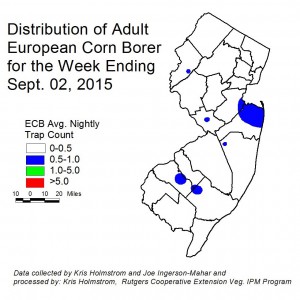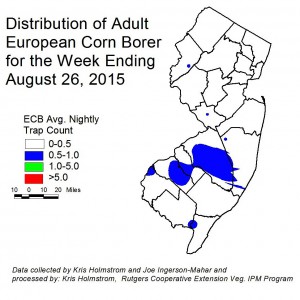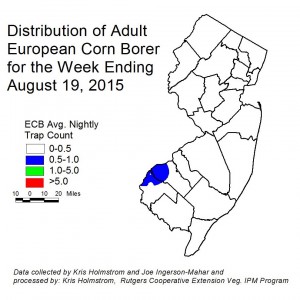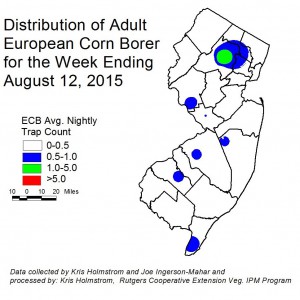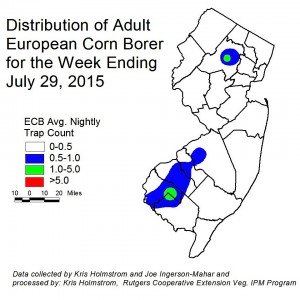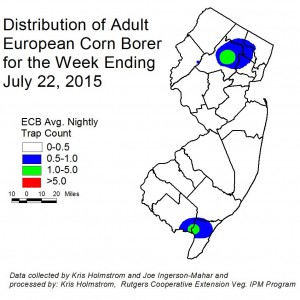Sweet Corn
The second European corn borer (ECB) generation continues to be weak. Catches are limited to scattered pockets registering more than one moth per week (see ECB map).
As always, consider treating when the number of infested plants in a 50 plant sample exceeds 12%. Any planting remaining at or above threshold as it proceeds to full tassel should be treated, as this is the last stage at which ECB larvae will be exposed and vulnerable to insecticidal sprays.
See the 2015 Commercial Vegetable Recommendations Guide for insecticide choices.
